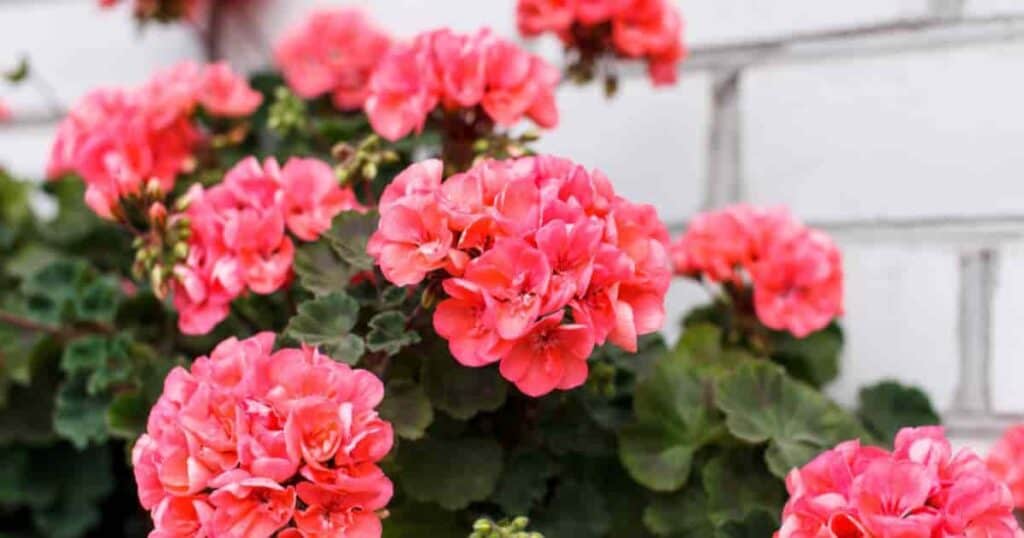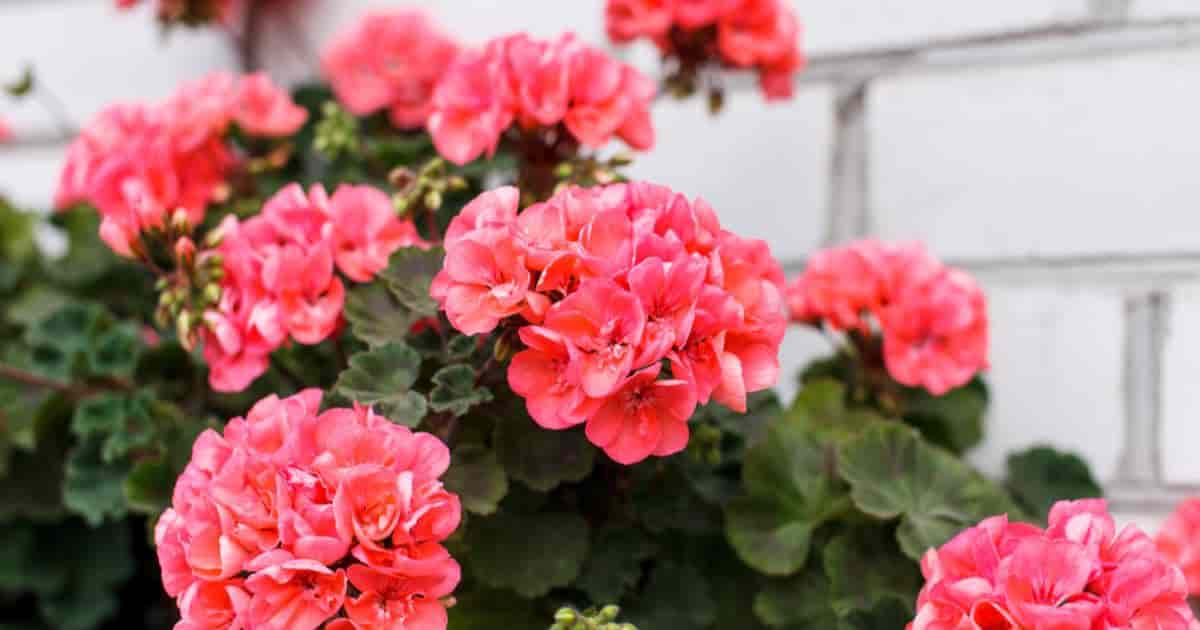A well-known gardener in Vermont was asked, “How do you grow your geraniums?” and the answer came back promptly, “Every way.” This explains the versatility and adaptability of this old garden and house plant favorite.

Geranium’s Ability To Bloom
The geranium’s ability to bloom throughout the garden season has permitted this plant to share some of the popularity of one of its few competitors, the modern rose.
Unlike the rose, which is found as a native plant in most temperate and cool climates, the geranium, by contrast, a native of South Africa, had to adapt itself to both Europe and America.
It has done a good job in becoming acclimated in all countries where flowers play an important part in our daily living.
Many travelers in England, Spain, France, Germany, Switzerland, Holland, and the Scandinavian countries have been impressed by the profuse plantings of geraniums in European gardens.
Liberty Hyde Bailey, the noted horticulturist, once remarked, “If a window or a garden can have but one plant, that plant is likely to be a geranium.”
Geranium Popularity
The current popularity of geranium in America seems to be associated partly with the trend toward ranch-style homes. This trend probably will continue.
The one-story home with its rather severe lines can best be landscaped with dwarf bedding plants, using a minimum of tall shrubs or trees as in conventional home landscaping.
In the ranch house setting, geraniums will be at home in garden beds or borders, in special built-in planters, or as potted plants, and will provide a maximum of color for a minimum of labor, watering, and general outlay.
Difference Between The Terms Pelargonium And Geranium
Home gardeners are often confused by the terms Pelargonium and geranium.
The name geranium is the popular term applied to the many species and varieties of this large plant family, whose ancestral home is the Cape Colony of South Africa.
The correct botanical name for all of these species is Pelargonium, but in America, most gardeners reserve the name Pelargonium for the Lady Washington or Martha Washington type of geranium.
When the term geranium is used in a strict botanical sense, it applies to a group of hardy perennial plants commonly called Wild Geranium or Cranesbill.
Kinds To Grow
The Common Geraniums
The subject of this article is sometimes referred to as zonal geranium due to the horseshoe marking of the leaves of wide varieties. In addition, horticulturists also recognize the following groups:
- Fancy or Variegated Leaved Geraniums: Beautiful foliage and color variations. Better adapted to indoor culture in pots.
- Scented-Leaved Geraniums: The leaves, when crushed, give off a wide variety of delightful aromas. The peppermint and rose geraniums used for flavoring jellies are favorites in this class. Flowers are small and insignificant. Best grown as pot plants.
- Ivy-Leaved Geraniums: Foliage is quite similar in texture and form to the common English Ivy. Flowers are showy in color and size. Plants have a trailing habit, which adapts them to the window box and planter use rather than bedding arrangement.
- Lady Washington Geraniums: This group is known as Martha Washington and by the fanciers as Pelargoniums. Unfortunately, their erratic behavior in flowering does not recommend them for culture in the prairie states.
- Cactus and Oddities: In this group, we can include the so-called cactus geraniums, spring types, succulents, and climbers. They are popular with geranium collectors and hobbyists.
Culture Of Common Geraniums
There are hundreds of named varieties of geraniums. Still, not all are qualified to meet the home gardener’s rigid requirements of continuous bloom and attractive foliage from Memorial Day until frost when used in outdoor plantings.
This is due to differences in climatic adaptation, disease resistance, and flowering habits. Modern breeders consider these limitations in their quest for new geranium varieties.
Some good performers in the various color classes under Midwestern conditions are as follows:
RED
- Radio Red
- Olympic Red
- Pride of Camden
- Better Times
PINK
- Mme. Landry
- Poitevin
- Pink Supreme
WHITE
- Mme. Buchner
- Madonna
- Gregerson’s White
PURPLE
- Springfield Violet
Planting Geraniums
It pays to plant potted geraniums grown from slips or cuttings for outdoor use. Young plants in 2/2-inch pots are useful for early planting and are less cumbersome than larger plants when ordered by mail. Florists can supply geraniums out of 3-inch or 4-inch pots for local delivery.
Best Month Of Planting
May is the best month for planting geraniums out of doors, and the exact date will vary from early May in warmer sections to late May and early June in more northern areas.
When selecting a geranium plant location, remember that they flower much better with ample sunshine and will do best in south, west, or east exposure. Conversely, a heavy shade over a long day is not desirable.
Variety Of Soil Types
Soil is no problem as the geranium can adapt to various soil types. The typical silt-loam soils of the prairie states will grow good geraniums.
If they are to be grown in soil that is not fertile to start with, add a small amount of well-rotted manure.
A soil of poor texture may be improved by working peat moss thoroughly into it and feeding lightly with a complete commercial fertilizer.
Planting Process
In the planting process, set the plants at about the same depth they stood before transplanting. Water plants thoroughly at planting time.
Subsequent watering will be determined by natural rainfall but should be more frequent in hot, dry weather than in cool weather.
Special soil mixtures are advised when geraniums are grown in pots or planters. A standard mixture consists of 3 parts garden loam, 1 part peat, and 1 part sand.
As in the garden, geraniums in pots may occasionally be given light applications of commercial fertilizers, but feeding should never be overdone.
If soil is known as capable of producing good vegetables or flowers, it should be satisfactory for geranium culture.
Plantings of geraniums will always be improved if dead leaves and flowers are carefully and promptly removed from the plant.
With the fingers, break all dead leaves and flowers where they are attached to the main stem.
44659 by E. C. Volz
